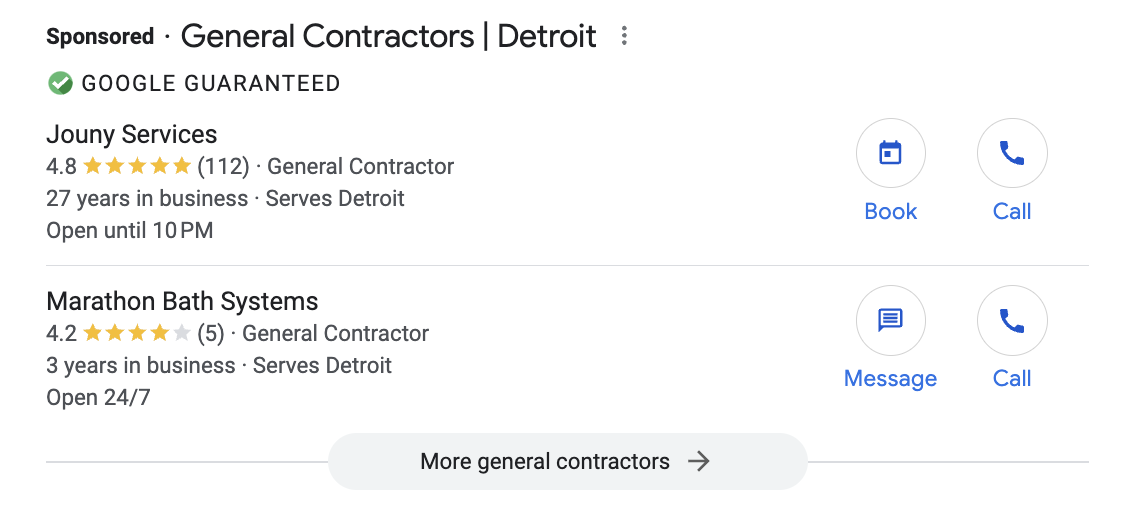The Meaning of SERP and How it Influences SEO Content

In This Article
The term “SERP” (search engine results page) is a common buzzword among digital marketing professionals, but many outside the field are unfamiliar with it. Understanding SERPs is vital to the success of a website—and, in turn, a business—so learning how they work and how to leverage them is essential.
The ever-changing algorithms used by major search engines can be confusing. Google is constantly changing when it comes to delivering the best results possible. These changes are great in theory but can also be challenging to keep up with.
This article covers the SERP basics, including its definition, anatomy, and how they affect search engine optimization (SEO). Because Google accounts for approximately 92% of search engine usage, we will focus on its specific SERP formula.
SERP Meaning
A search engine results page is the page you see when you type in a query in a search engine (like Bing or Google). SERPs can look different depending on the search engine; they may include shopping suggestions, images, videos, or simple text with meta descriptions. Meta descriptions summarize what a reader can expect to learn about on a specific webpage. The meta description can help persuade the reader to choose your web page over another.
Every SERP is its own unique animal and can vary dramatically, even when different searchers use the same keywords or phrases. This variation comes from search engines trying to optimize user experience and return results based on several factors, including a particular user’s search history, location, and language settings.
Anatomy of a SERP
Anytime you search for a topic or ask a question using Google’s Search function, you experience the information-rich world of a SERP. A SERP usually consists of three main types of results:
- Paid results (advertisements)
- Organic (free) results
- SERP features (Google’s way of improving user experience)

Paid Results
Paid results are a vital component of SERPs and can be found at the top of the page—above the organic results. As the name suggests, paid results are advertisements companies pay for to have their brand featured in Google Ads.
These ads appear at the top or along the side of the search results, featuring an “Ad” or “Sponsored” text stamp next to the listing. These results are typically relevant to the user’s search query and are paid for by businesses to gain visibility. Google charges the advertiser a fee whenever someone clicks on one of the ads. This type of campaign is also called pay-per-click (PPC).

Organic Results
The next element of a SERP is the organic search results. Organic results are web page listings generated by the search engine’s algorithm (not paid advertisements). These results aren’t paid for and are highly competitive. Various factors can influence organic search results, including keyword relevance, site quality, and user engagement.
With Google adopting infinite scrolling to their search results page, “ranking on page one” isn’t really a thing anymore. The goal has evolved into using SERP features and a solid SEO strategy to earn your website a coveted top spot on any SERP.
SERP Features
A user can get a lot of extra information depending on their exact search. These SERP features include anything that appears on a search page that isn’t an organic or paid result. Some examples of SERP features include “featured snippets,” “People also ask,” and “local pack” listings. According to Google’s Helpful Features doc, they design SERP features to give users “the right information at the right time in the right format.”
Featured Snippet
A featured snippet is a summary from a web page that quickly answers a user’s query. Generated by Google, the snippet can be a text summary, image, or video clip and includes the page’s title and URL. Using a web page in a featured snippet may seem like the Holy Grail of SEO; however, it’s worth noting that the web page highlighted in the snippet will not appear a second time in the search results.
People Also Ask
The “People also ask” box is a menu of commonly asked questions that are related to the original query. When you click on one of the suggested questions, it opens a content snippet, with an option to launch a new Google search using the new question.

Local Pack
Local pack listings are also a significant part of SERPs, especially for local businesses. These listings—which show a map with the company’s location and contact information—appear when users perform local searches, like “restaurants near me.” Location-based products and services heavily rely on these listings to introduce potential customers to their business. A 2017 study conducted by Google shows that “smartphone users are significantly more likely to purchase from companies whose mobile sites or apps customize information to their location.” Consumers expect their buying journey to be tailored to their specific location, requiring little more effort than typing “burgers” in a search query.
How SERPs Impact SEO Strategy
SERPs hold a mirror to a website’s SEO strategies, reflecting their overall effectiveness. A website’s SERP position directly correlates with its organic success.
Higher SERP rankings mean your SEO strategy is working, leading to increased visibility, organic traffic, and potential conversions. Ranking low (or not at all) on a SERP can expose weak spots in your SEO strategy, showing you where to make changes.
There are many ways to improve the overall vitality of your SEO strategy by leveraging SERPs to work in your website’s favor. Here is a quick overview of how to land a coveted top spot on a SERP:
- Optimize keywords. Identifying which keywords a site currently ranks for on a SERP and discovering new keywords it could potentially rank for can increase your website’s visibility. Bonus tip: Studying a SERP’s “People also ask” section can be a gold mine for discovering long-tail keywords.
- Write a featured snippet. By optimizing a web page’s content to appear in a featured snippet, you can dramatically increase your site’s visibility and click-through rate.
- Leverage local packs. Local packs show users a map of businesses relevant to their search. The packs include valuable information like a business’s customer reviews, contact information, and physical location—all details a potential customer wants to know. Optimizing your website for local queries is critical to higher SERP rankings.
Get in Touch
Want to learn more about how Metric Marketing can help increase your website’s visibility? Get in touch with one of our professional search engine optimization experts today to discover how our team has helped businesses rank higher on Google and connect with their target audience.
Must-read articles
Looking for something else?
There's so much more
Ready to Inquire?














